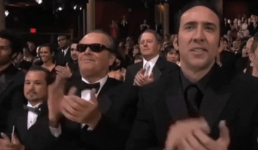Jolls
Well-known member
Deep Dive 12: The Centre Crisis – How do we Get It Right in 2026
Let’s be honest – if there’s one part of the field that’s consistently let us down over the past few seasons, it’s our centres. Defensive lapses, clunky combinations, and stop-gap solutions have made the edges a glaring weakness .... 2025? A little better but in reality more of the same story.
Between Toa's injuries, Naden’s rocks-and-diamonds performances and AD's inconsistent form we’ve never had a settled, effective pairing. It’s killing our momentum, exposing our wingers, and suffocating any flow in our attack.
The frustrating thing is that our finishers are pretty good and we’ve got a dynamic fullback. Our halves have also underperformed; however, with Galvin now gone we have settled on a halves combination. We have to expect that this combination will continue to develop over the remainder of this season and over the off season.
What's Going Wrong?
- Chop and change: We’ve had at least seven different centre combos this year alone. No continuity = no chemistry.
- Edge defence in chaos: Misreads, poor communication with the wingers, and soft shoulders. Teams are targeting us wide every week and finding joy.
- No attacking punch: Our centres are contributing little to nothing in terms of line breaks, offloads, or try involvements. Toa was going OK until he injured his shoulder and Taylan May has been a revelation since his arrival. An off season will see him better in 2026. Let’s Break It Down
If we Break it Down
- Starford To’a – Solid, versatile, and calm. He was doing well up until his injury. From then on his form dropped significantly. What we are unsure of is if this is the usual inconsistency or if the drop in form is completely related to his shoulder injury. His ppor injury rate and his incnsistency have him in and out of the position making it diffcult to build combinations. To’a will fight for a starting postion in 2026; however, he may also be vying for a postion on the wing.
- Brent Naden – His pre season was excellent and then he was injured. He has moments of brilliance but is too erratic to trust in a key position. His reads in defence are a liability, and errors at crucial moments have cost us points. At best, he’s a bench utility option moving forward.
- Adam Doueihi – Has brought structure when playing centre, but he lacks the agility and quick feet needed to handle agile edge attackers. Long-term, his best role, if he can build the resilience, is at 13—ball-playing, defending the middle, and covering as centre depth.
- Taylan May – This is the big shift. He’s aggressive, powerful, and smart in defence. At Penrith and in his short term here, he’s shown he can defend both sides and create line breaks on the edge. He is a walk up into one of the centre positions round 1 in 2026.
- Tony Makasini (Watch This Space) – A big body with line-breaking ability and some serious upside. If he has a strong offseason, don’t be surprised if he pushes hard for a spot in the 17. He could be the wildcard that shakes up the other edge. I would not be surprised to see him debut at Leichardt v the Cows.
What Needs to Happen in 2026
- Taylan May is the cornerstone centre. Lock him in and build defensive combinations around him. He brings stability we’ve been lacking for years.
- Adam Doueihi to 13. Let him control the middle third and offer depth at centre if we need a reshuffle mid-game or during injuries.
- Starford To’a. At present Toa is most likely to lock down the other centre position; however, he will be forced to fight hard for the position. In addition to Makasini there are a number of juniors starting to push for postions in KoE. His versatility and calmness under pressure are his greatest asset and his combination with Taruva is solid. The pressure from Makasini is a huge positive for the club.
- Big Mak to challenge for the second centre spot. Put the pressure on during trials and let his form decide it. If he clicks, he could be the wrecking ball.
- End the reshuffling. Barring injury, we need to stop the rotaion of our centre pairings. Define the roles, pick and stick. Let the combinations develop.
Final Thoughts
We’ve patched up the spine. We’ve settled on our halves combiantion and there is some additional depth and punch in the pack. Still trusting Richo to deliver us another momentum changer. But, unless we fix the centres, we’ll keep leaking points and killing our outside attack.2026 has to be the year we stop plugging holes and build real edges.
Agree? Disagree? Who’s your centre pairing for next year?
Last edited:
